- Author: Kathy Keatley Garvey

No sweat? Or, are you...ahem...sweating the answer?
You can learn more about native bees at a special presentation on Saturday, Sept. 17 in the UC Agriculture and Natural Resources' Hopland Research and Extension Center, Hopland.
"Native Bees in Your Backyard," sponsored by UC ANR, will take place from 10 a.m. to 2 p.m. and will feature entomologist Gordon Frankie, UC Berkeley professor and co-author of California Bees and Blooms: A Guide for Gardeners and Naturalists, and award-winning pollinator garden designer Kate Frey, co-author of The Bee-Friendly Garden (written with co-author Gretchen LeBuhn, professor of biology at San Francisco State University.)
Entomologist/insect photographer Rollin Coville, who captured the spectacular images in California Bees and Blooms, will share his photos.
"The morning will be spent learning about some of the 1,600 native bee species found in California, from the leafcutting bee to the cuckoo bee, the sweat bee to the mining bee!" a spokesperson said. Attendees will learn how to identify them and how to accommodate the needs of the native bees in their own gardeners.
After a locally sourced lunch from Black Dog Farm catering, the participants will carpool to the gardens of Kate Frey, about five miles from the Hopland Research and Extension Center. Her gardens are renowned for their floristic diversity, color and the habitats they provide for wildlife. (See previous Bug Squad blog on Kate Frey.)
California Bees and Blooms is "the bible" of California bee books. A main co-author is Robbin Thorp, distinguished emeritus professor of entomology at UC Davis. Thorp, who received his doctorate in entomology from UC Berkeley, co-teaches The Bee Course every year at the Southwestern Research Station Portal, Ariz., which began today (Aug. 22) and continues through Sept. 1. Rounding out the list of co-authors of California Bees and Blooms is plant expert/curator Barbara Ertter of UC Berkeley.
Registration for "Native Bees in Your Backyard" is now underway at http://hrec.ucanr.edu/?calitem=336669&g=61984. Early bird registration before Sept. 1 is $35. Registration is $40 after this date.
For more information, contact Bird at (707) 744-1424, Ext. 105 or email her at hbird@ucanr.edu.

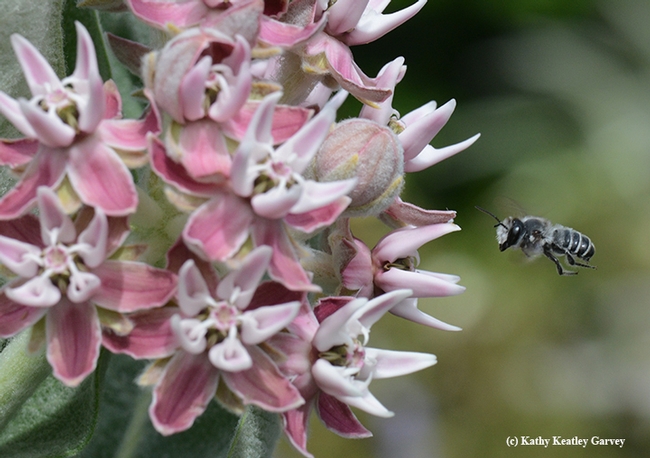
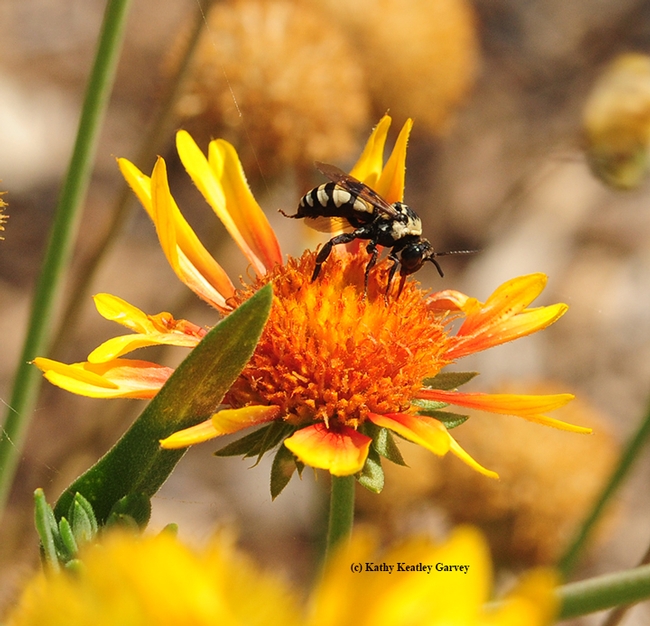
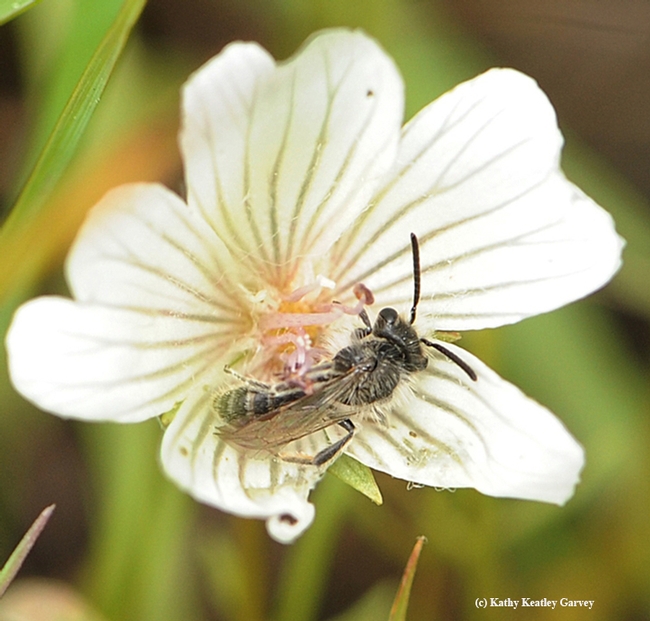
- Author: Kathy Keatley Garvey
We just met a male black-faced bumble bee, Bombus californicus.
It was early morning and he was resting on a blanket flower (Gaillardia), a brilliant member of the sunflower family. When you're a bee, a blanket flower offers both bed and breakfast.
Gaillardia was named after M. Gaillard de Charentonneau, an 18th-century French magistrate who was a patron of botany, according to Wikipedia. "The common name may refer to the resemblance of the inflorescence to the brightly patterned blankets made by Native Americans."
The bumble bee species, a native, takes its name from California. Unlike the yellow-faced bumble bee, Bombus vosnesenskii, its face is black and long. (Except when it's covered with golden pollen.)
Authors Kate Frey and Gretchen LeBuhn in their newly published book, The Bee Friendly Garden, note that unlike honey bees, bumble bees can fly in "cold rainy weather...They have several physiological adaptations that allow them to fly in bad weather, including the ability to shiver to raise their body temperature."
Frey, a world-class garden designer and LeBuhn, a bee expert and professor at San Francisco State University, offer advice on how to attract bumble bees and other pollinators to your garden. They quote native pollinator specialist Robbin Thorp, distinguished emeritus professor of entomology at the University of California, Davis, and the co-author of Bumble Bees of North America: And Identification Guide and California Bees and Blooms: A Guide for Gardeners.
What we know is this: it's good to have bed and breakfast for a bumble bee. Much of the bumble bee population is declining and we all need to do what we can to protect them and provide for them.

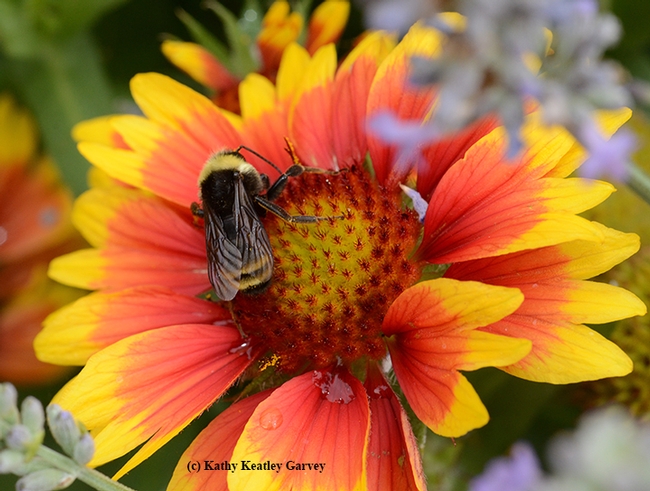
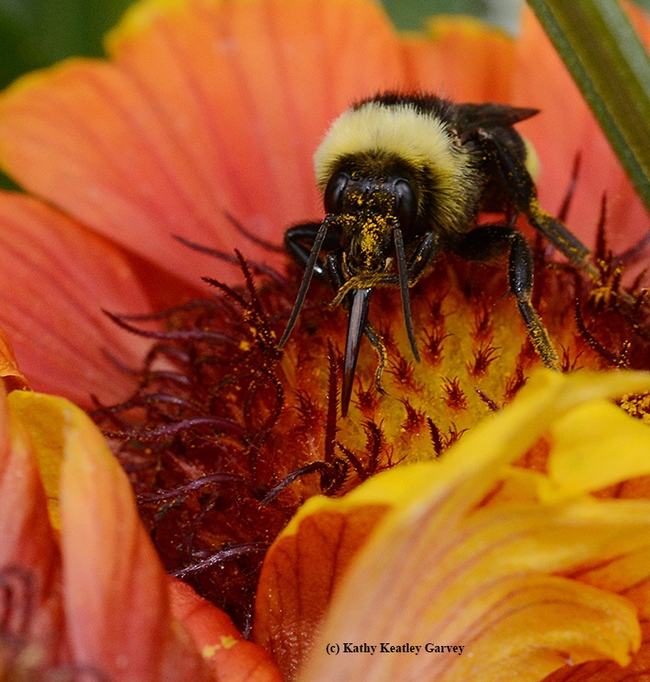
- Author: Kathy Keatley Garvey

That's how we felt when we recently visited the one-acre pollinator bee garden of Kate Frey and her artist husband, Ben, in Hopland, Mendocino County. It's magical.
Kate, a world-class garden designer, and bee expert Gretchen LeBuhn, professor in the San Francisco State University, have just co-authored The Bee-Friendly Garden, an educational, enthusiastic and inspiring book that will help you turn your own garden--large or small, rural or urban--into something magical.
Among her many honors, Kate Frey twice won gold medals at the prestigious Chelsea Flower Show in London and received a Silver Gilt award in 2003. She met Queen Elizabeth, who admired her work. Currently Kate directed and taught at Sonoma State University's Sustainable Landscape Program with Extended Education, and consults for various wineries and residences around California, including The Melissa Garden in Healdsburg (privately owned and now closed) and Lynmar Estate Winery in Sebastopol. Her website, http://freygardens.com, offers more information about her and her mission. It's all about the pollinators and how to attract them!
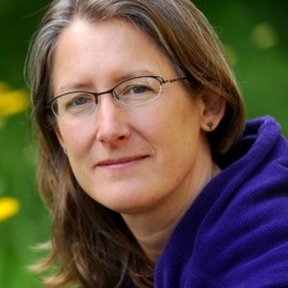
The Frey/LeBuhn team says it well in the preface: “Bee gardens make people happy. Whether you enjoy a brilliant chorus of saturated color, a tranquil sanctuary from the busy world, or a hardworking edible garden, there is a glorious, flower-filled bee garden waiting for you.”

They cover:
- The Benefits of a Bee Friendly Garden
- Our Friends, the Bees
- Plants for Your Bee Friendly Garden
- Bee Friendly Plants for Edible Gardens
- Bee Garden Basics
- Designing Your Bee Garden
- Beyond Your Own Backyard: Becoming a Bee Activist
Their book also contains resources, and regional plant lists for the Southeast, South Central, Southwest, and Pacific Northwest regions, Rocky Mountain/Intermountain West Region and the Northeast/Midwest/Mid-Atlantic Region.

The Frey/LeBuhn team recommends that you “keep a notebook throughout the year and write down the names of plants and which bees are visiting them. This is a fun and informative exercise wherever you go—from your home, to visiting friends, to walks around the neighborhood or anywhere you go in the world,” they write. “Much information can be gleaned this way, much discovered and much shared. Everyone can be a local expert.”
We love the photos of pollinators and gardens in the book—many taken in the Frey garden and in the Melissa Garden. They also focus on small-scale gardening—you don't need a huge space for a bee garden. (The urban Garvey garden is an example!)
Laurie Davies-Adams, executive director of the Pollinator Partnership, says that “this book will make bees happy and healthy in gardens across the country.”
Yes, and people, too!
(Note: The Frey garden will be open June 18 for the Garden Conservancy Open Days Program. See https://www.gardenconservancy.org/open-days/garden-directory/frey-gardens. Here is the entire schedule: https://www.gardenconservancy.org/events/all-events/mendocino-county-ca-open-day-3)

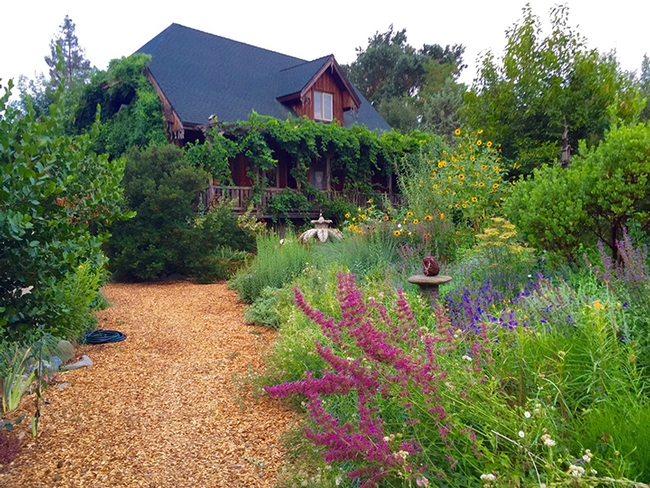


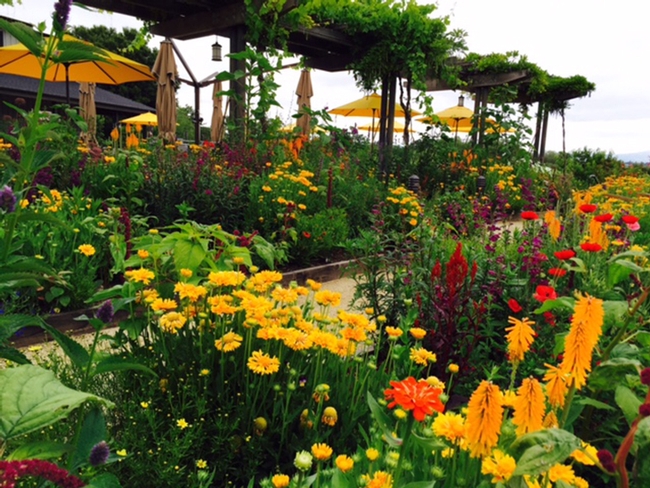
- Author: Kathy Keatley Garvey
This is no ordinary calendar.
We just previewed the second annual North American Native Bee calendar and it's just absolutely spectacular.
Created by UC Berkeley-alumnus Celeste Ets-Hokin, a native bee advocate from the San Francisco Bay Area, the calendar is a fundraising project for the Great Sunflower Project and the Xerces Society for Invertebrate Conservation.
The macro images, primarily the work of UC Berkeley-trained entomologist/insect photographer Rollin Coville, are stunning. Coville, who received his doctorate in entomology from UC Berkeley in 1978, has been photographing insects and spiders for more than 25 years.
The calendar is unique in that each month not only features a "pin-up" photo of a bee but also includes notes on preferred plants, nesting needs, and guidance on how to identify the genus. It's like zeroing in on the lifestyles of the not-so-rich and not-so-famous, the ones that share your garden with honey bees. You can preview a sample of the front cover, one month, and back cover of the calendar.
The calendar idea originated with Gretchen LeBuhn, an environmental science professor at San Francisco State University. She's the one who launched the Great Sunflower Project. What's the Great Sunflower Project about? Members plant sunflowers in their garden, monitor bee visits and report back to LeBuhn. "The Great Sunflower Project currrently boasts an online membership of about 80,000 citizen scientists from across the United States and Canada," Ets-Hokin said.
Back to the calendars. This year the theme is "Bees and Food."
A good theme, a good cause, and a good place to learn about the many species of bees, including leafcutter bees, sweat bees and bumble bees, and how to attract them.
The 2010 calendar was so popular that it sold out. The 2011 calendar promises to be even more popular. In fact, the project coordinators are now taking orders. Orders received by Oct. 15 will be shipped the third week of October, Ets-Hokin said. Orders received by Nov. 30 will be shipped the first week of December.
I have it on my calendar. Only problem is, I don't want to part with my 2010 North American Bee Calendar.

- Author: Kathy Keatley Garvey
Sunflowers, native to the Americas, are spectacular, especially when you encounter a field of them. If you look closely, you'll see honey bees, sunflower bees and bumble bees working the flowers.
It's pollination at work.
To encourage backyard gardeners to grow sunflowers and collect data about the bees that visit them, the Great Sunflower Project provides free seeds and educational information.
You can obtain the Lemon Queen sunflower seeds from the Great Sunflower Project, from a local nursery or from a seed catalog.
Associate professor and biologist Gretchen LeBuhn of the University of California, Santa Barbara, started the project in 2008 as a way to get citizens interested in bee pollination.
"In 2008, we started this project as a way to gather information about our urban, suburban and rural bee populations," writes LeBuhn, considered "the queen bee" of the Great Sunflower Project. "We wanted to enlist people all over the U.S. and Canada to observe their bees and be citizen scientists. We asked them to plant sunflowers in their gardens so we could standardize study of bee activity and provide more resources for bees. Sunflowers are relatively easy to grow and are wildly attactive to bees."
Since 2008, the Great Sunflower Project has expanded its list of plants studied to include bee balm, cosmos, rosemary, coreopsis (tickseed), and purple coneflower.
"It’s time to turn off your television, take off those earphones, shut down that computer, go outside, and rediscover the wonder of nature," LeBuhn says.
Good advice.
That's one small step toward improving bee habitat--and human habitat, too.





